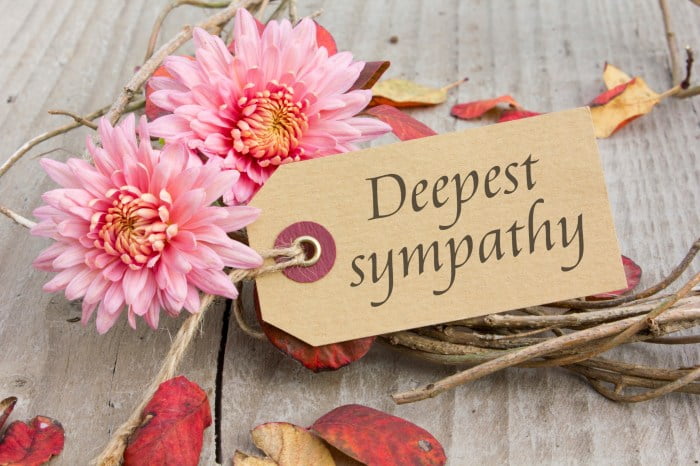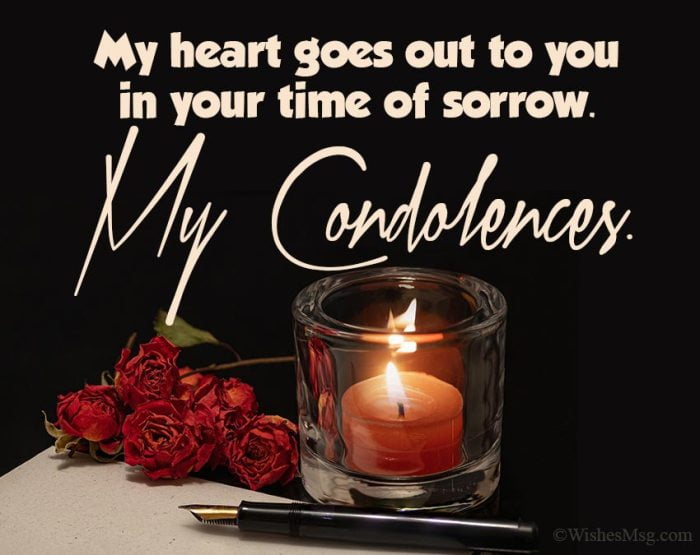In times of grief, words often fail to convey the depth of sympathy and support we feel for those who have lost a loved one. Condolence message images step in to fill this gap, offering a visual representation of our heartfelt emotions.
These images, adorned with poignant words, serene landscapes, or abstract designs, serve as a powerful medium to express our condolences and offer comfort to the bereaved.
From traditional black-and-white designs to modern, colorful creations, condolence message images come in a myriad of styles, each carrying a unique message of empathy and solidarity. They can be shared digitally or printed and framed, becoming a tangible reminder of our support during their difficult time.
Introduction to Condolence Message Images

Condolence message images are powerful tools that help express sympathy and support during times of grief. They convey emotions and messages in a visually appealing and comforting manner, providing a unique way to show care and understanding.
Visual elements in condolence message images play a crucial role in expressing emotions and messages. Images of flowers, candles, and landscapes evoke feelings of peace, serenity, and hope. They create a visual representation of the sentiments being conveyed, allowing the recipient to connect with the message on a deeper level.
Types and Styles of Condolence Message Images
Condolence message images come in various types and styles, each with its unique characteristics:
- Traditional Images: These images often feature somber and elegant designs, with elements like black ribbons, doves, and angels. They convey a sense of respect and solemnity, paying tribute to the deceased and their memory.
- Modern Images: Modern condolence message images embrace contemporary design aesthetics, incorporating vibrant colors, abstract patterns, and minimalistic elements. They offer a fresh and uplifting take on expressing sympathy, appealing to a wider range of audiences.
- Personalized Images: Personalized condolence message images incorporate elements that are meaningful to the deceased or their family. This could include photos of the deceased, their favorite flowers, or symbols that represent their life and achievements. These images create a deeply personal and heartfelt expression of sympathy.
Design Elements and Considerations
Effective condolence message images harness the power of visual communication to convey emotions and express sympathy. Several design elements play a crucial role in creating visually appealing and emotionally resonant images.
Color Palettes
Colors have a profound impact on emotions and can set the tone of a condolence message image. Soft, muted colors like blues, greens, and grays often convey a sense of tranquility and serenity. Warm colors like yellows and oranges can evoke feelings of warmth and comfort.
Black and white images can create a timeless and elegant look, while vibrant colors can add a touch of cheerfulness.
Typography
The choice of font and typography can significantly influence the readability and emotional impact of a condolence message image. Sans-serif fonts, with their clean and modern lines, are often preferred for their clarity and legibility. Serif fonts, with their decorative flourishes, can add a touch of elegance and formality.
The size and spacing of the text should also be carefully considered to ensure easy reading.
Imagery
Images can convey powerful emotions and messages that words alone cannot. When selecting imagery for a condolence message image, consider using soft, natural scenes like sunsets, flowers, or landscapes. Abstract or symbolic images, such as a candle or a dove, can also be effective in expressing sympathy and support.
Avoid using images that are too graphic or disturbing, as they may cause additional distress.
Layout
The layout of a condolence message image should be visually balanced and easy to navigate. The text and images should be arranged in a way that guides the viewer’s eye smoothly through the message. White space can be used effectively to create a sense of calm and serenity.
The overall design should be cohesive and harmonious, with each element contributing to the overall message.
Personalization and Customization

Condolence message images hold immense emotional significance, conveying empathy and support during difficult times. Personalizing these images adds a heartfelt touch, reflecting the unique bond between the sender and the recipient. It demonstrates genuine care and consideration, making the message more impactful and meaningful.
Incorporating personal touches enhances the emotional connection and shows that the sender has taken the time to create something truly special. This can be achieved through various elements such as names, dates, or special memories.
Names and Dates
Including the name of the deceased person and the dates of their birth and passing is a simple yet powerful way to personalize a condolence message image. It acknowledges the individual’s life and their presence in the lives of those who loved them.
Adding the sender’s name adds a personal touch, showing that the message comes from a place of genuine care and understanding.
Special Memories
If appropriate, incorporating a special memory or anecdote related to the deceased person can create a deeply moving and memorable condolence message image. This could be a photo of a cherished moment, a quote that held significance for them, or a symbol that represents their life and passions.
By including these personal touches, the sender shows that they have taken the time to reflect on the deceased person’s life and the impact they had on others.
Customization of Design Elements
Customizing the design elements of a condolence message image can also add a personal touch. Choosing colors, fonts, and imagery that resonate with the deceased person’s personality or preferences shows that the sender has put thought into creating a message that is truly unique and meaningful.
For example, if the deceased person loved nature, incorporating images of flowers or landscapes can be a fitting tribute.
Personalization and customization are key elements in creating condolence message images that truly touch the hearts of recipients. By incorporating personal touches, senders can create messages that are both emotionally impactful and deeply meaningful, providing comfort and support during times of grief.
Cultural and Religious Considerations
Cultural and religious beliefs play a significant role in shaping the imagery and symbolism used in condolence message images. Different cultures and religions have unique traditions, customs, and beliefs surrounding death, grief, and mourning, which are often reflected in the design and content of condolence messages.
For instance, in some cultures, it is customary to use images of flowers, candles, or doves to express sympathy and support. These symbols are often associated with peace, love, and remembrance.
Respectful Acknowledgment of Diverse Backgrounds
When creating condolence message images, it is important to be mindful of the cultural and religious background of the recipient. Using imagery or symbolism that is respectful and appropriate to their beliefs demonstrates sensitivity and understanding during a difficult time.
- For example, in some cultures, the color white is associated with mourning, while in others, it is associated with celebration. It is important to research and understand the cultural significance of colors and symbols to ensure that the message is conveyed appropriately.
- Additionally, some religions may have specific guidelines or restrictions regarding the use of certain images or symbols in condolence messages. It is essential to be aware of these guidelines to avoid causing offense or discomfort.
Digital Platforms and Sharing
In the digital age, condolence message images are shared and received through various online platforms and channels.
The choice of platform depends on factors such as privacy, accessibility, and the recipient’s preferences.
Social Media
- Advantages: Wide reach, ability to share with multiple recipients simultaneously, visual appeal, ease of use.
- Disadvantages: Lack of privacy, potential for misinterpretation, inappropriate content, overwhelming for the recipient.
- Advantages: Private and secure, allows for personalized messages, easy to share with multiple recipients.
- Disadvantages: May not be accessible to all recipients, may be overlooked or lost in the recipient’s inbox.
Messaging Apps
- Advantages: Private and secure, allows for personalized messages, real-time communication, ability to share images and videos.
- Disadvantages: May not be accessible to all recipients, may be intrusive for the recipient.
Ethical Considerations and Etiquette

Using condolence message images involves ethical considerations and etiquette that require attention. Respecting privacy, copyright laws, and cultural norms is crucial to ensure respectful and sensitive communication.
Permission and Copyright
- Obtain permission before sharing images of deceased individuals. Respect the privacy of the family and friends of the deceased by seeking their consent before sharing their loved one’s image.
- Be mindful of copyright laws. Using copyrighted material without permission can lead to legal consequences. Ensure you have the necessary rights or licenses to use images, or use images that are in the public domain or under a Creative Commons license.
Respectful and Sensitive Communication
- Choose images that are appropriate for the context. Avoid using images that are overly graphic, disrespectful, or offensive.
- Consider the cultural and religious beliefs of the deceased’s family and friends. Be sensitive to their customs and traditions when selecting images.
- Avoid using images that depict the deceased in a negative or unflattering manner. Choose images that honor their memory and reflect their personality and life.
Avoiding Misunderstandings and Offense
- Be cautious about sharing images that may be misinterpreted or cause offense. Avoid using images that contain political or religious symbols or messages that may be offensive to certain groups.
- Consider the context in which you are sharing the image. Ensure that the image is relevant to the message you are conveying and that it does not detract from the overall tone of the condolence message.
Creating Impactful Condolence Message Images
Condolence message images can provide comfort and support during times of grief, leaving a lasting impact on the recipients. Here’s how to create impactful condolence message images:
Inspirational Examples
Consider the following examples of impactful condolence message images:
- A simple yet elegant image with a soft, muted color palette featuring a peaceful landscape, accompanied by a heartfelt message of sympathy.
- A photo of a serene sunset over a tranquil body of water, paired with a quote about finding peace and solace in nature during difficult times.
- A collage of cherished memories with the deceased, showcasing their smile, laughter, and moments of joy, accompanied by a message expressing gratitude for their life and the memories they left behind.
Effective Elements and Techniques
The effectiveness of these images lies in several key elements and techniques:
- Relevant Imagery: The images chosen are directly related to the theme of sympathy and comfort, evoking emotions of peace, serenity, and remembrance.
- Appropriate Color Palette: The color schemes used are often soft, muted, and calming, creating a soothing and contemplative atmosphere.
- Meaningful Quotes or Messages: The accompanying messages are carefully selected or crafted to express heartfelt condolences, offering words of comfort and support.
- Personalization: When creating images for a specific individual or family, incorporating personal touches, such as photos or quotes that hold special significance, can make the message even more impactful.
Step-by-Step Guide
To create impactful condolence message images, follow these steps:
- Choose Meaningful Imagery: Select images that resonate with the theme of sympathy and comfort, such as peaceful landscapes, serene sunsets, or cherished memories.
- Consider the Color Palette: Opt for a soft, muted color scheme that creates a calming and contemplative atmosphere.
- Add a Heartfelt Message: Craft a sincere and compassionate message that expresses your condolences and offers words of comfort and support.
- Personalize the Image (Optional): If creating an image for a specific individual or family, incorporate personal touches, such as photos or quotes that hold special significance.
- Choose Appropriate Fonts and Typography: Select fonts that are easy to read and visually appealing, ensuring the message is clear and legible.
- Create a Balanced Composition: Arrange the elements harmoniously within the image, creating a visually pleasing and cohesive design.
- Save and Share: Save the image in a high-resolution format and share it with the recipient through appropriate digital platforms.
Future Trends and Innovations
The world of condolence message images is constantly evolving, with new technologies and trends emerging to create more personalized, interactive, and immersive experiences. These innovations can help people express their sympathy and support in new and meaningful ways.
Leveraging Technology for Personalized Experiences
Technology can be used to create condolence message images that are tailored to the specific needs and preferences of the recipient. For example, AI-powered platforms can analyze the relationship between the sender and the deceased, as well as the tone and language of the message, to generate a personalized image that is both meaningful and appropriate.
Last Recap
Condolence message images are a powerful tool for expressing sympathy and support during times of grief. They provide a visual representation of our emotions, transcending cultural and linguistic boundaries. By carefully considering design elements, personalization, and cultural sensitivities, we can create condolence message images that are both visually appealing and emotionally resonant.
These images serve as a reminder that even in the face of loss, we are not alone and that our community stands with us in solidarity.
FAQs
What are some key design elements to consider when creating condolence message images?
Key design elements include color palettes, typography, imagery, and layout. Choose colors that convey sympathy and serenity, such as soft pastels or muted tones. Select fonts that are easy to read and visually appealing. Use high-quality images that evoke emotions and resonate with the recipient.
Arrange elements in a balanced and harmonious layout that guides the eye and conveys the intended message.
How can I personalize condolence message images to make them more meaningful?
Personalize condolence message images by incorporating elements that reflect the unique relationship between the sender and the recipient. This could include names, dates, or special memories. You can also use personal photos or images that hold sentimental value for the recipient.
What are some cultural and religious considerations to keep in mind when creating condolence message images?
Be mindful of cultural and religious beliefs when designing condolence message images. Research the symbolism and imagery commonly used in different cultures to express sympathy and support. Avoid using images or symbols that may be offensive or disrespectful to the recipient’s cultural or religious background.
What are some ethical considerations related to using condolence message images?
Always obtain permission before sharing images of deceased individuals or using copyrighted material. Be respectful and sensitive when sending condolence message images, avoiding potential misunderstandings or offense. Consider the privacy preferences of the recipient and choose a platform for sharing that aligns with their comfort level.
